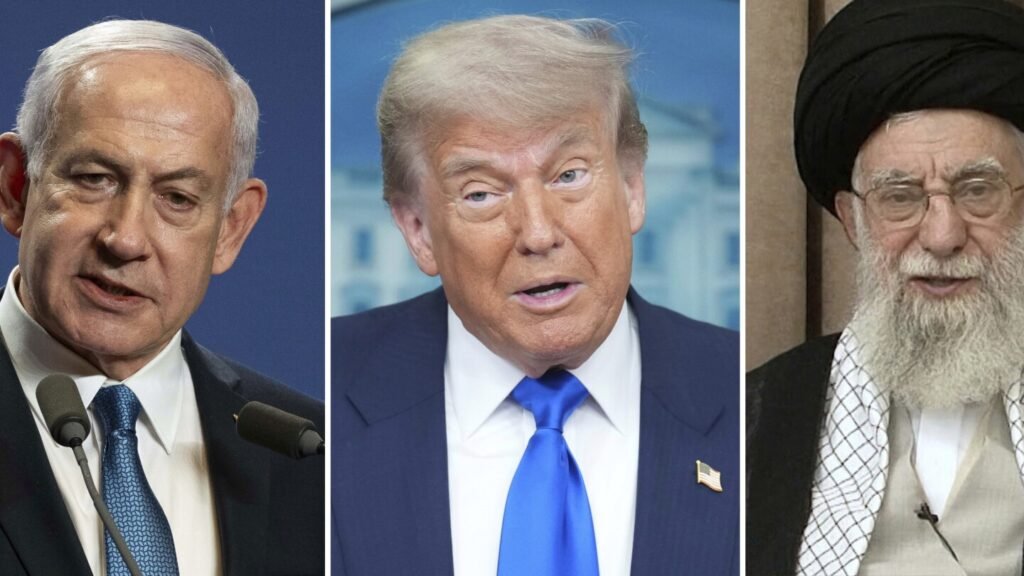DUBAI, United Arab Emirates (news agencies) — It’s been a week since the United States pressed Israel and Iran into a truce, ending a bloody, 12-day conflict that had set the Middle East and globe on edge.
The fragile peace, brokered by the U.S. the day after it dropped 30,000-pound “bunker-busting” bombs on three of Iran’s key nuclear sites, is holding. But much remains unsettled.
How badly Iran’s nuclear program was set back remains murky. The prospects of renewed U.S.-Iran peace talks are up in the air. And whether U.S. President Donald Trump can leverage the moment to get Israeli Prime Minister Benjamin Netanyahu ‘s government and Hamas focused on a ceasefire and hostage deal that brings about an end to the 20-month war in Gaza remains an open question.
Here is a look at what we still don’t know:
Trump says three targets hit by American strikes were “obliterated.” His defense secretary said they were “destroyed.”
A preliminary report issued by the U.S. Defense Intelligence Agency, meanwhile, said the strikes did significant damage to the Fordo, Natanz and Isfahan sites, but did not totally destroy the facilities.
Rafael Grossi, head of the International Atomic Energy Agency, said on CBS’ “Face the Nation” on Sunday that the three Iranian sites with “capabilities in terms of treatment, conversion and enrichment of uranium have been destroyed to an important degree.” But, he added, “some is still standing” and that because capabilities remain, “if they so wish, they will be able to start doing this again.” He said assessing the full damage comes down to Iran allowing inspectors access.
After the ceasefire deal came together, Trump spoke of potentially easing decades of biting sanctions on Tehran and predicted that Iran could become a “great trading nation” if it pulled back once-and-for-all from its nuclear program.
The talk of harmony didn’t last long.
Ayatollah Ali Khamenei, in his first public appearance after the ceasefire was announced, claimed Tehran had delivered a “slap to America’s face.” Trump responded by suggesting the supreme leader own up to the fact Iran “got beat to hell. The president also said he was backing off reviewing any immediate sanction relief, because of Khamenei’s heated comments.
White House officials say the U.S. and Iran are already in early discussions about resuming negotiations that had ended after Israel began launching strikes. But Iranian Foreign Minister Abbas Araghchi says there’s no agreement in place to restart talks.
It’s unclear if Iran’s leadership is ready to come to the table so soon after the fighting has ended — especially if Trump holds to the position that Iran must give up nuclear enrichment for even civilian use. And Trump has offered conflicting statements about his commitment to talks. “We may sign an agreement,” he said Wednesday at a NATO summit press conference. He added, “I don’t think it’s that necessary.”
Khamenei’s age and recent diminished appearance have raised questions about the scope of his involvement in U.S.-Iran relations and the Islamic Republic’s response to both American and Israeli strikes. But despite having spent the last few weeks in a bunker as threats to his life escalated, there is little indication that the ayatollah does not still reign supreme over the country’s massive military and governmental operations.
Khamenei has ruled three times longer than his predecessor, the late Ruhollah Khomeini, and has shaped life for the country’s more than 90 million people perhaps even more dramatically.
He entrenched the system of rule by the “mullahs,” or Shiite Muslim clerics. That secured his place in the eyes of hard-liners as the unquestionable authority, below only that of God. At the same time, Khamenei built the paramilitary Revolutionary Guard into the dominant force in Iran’s military and internal politics.
